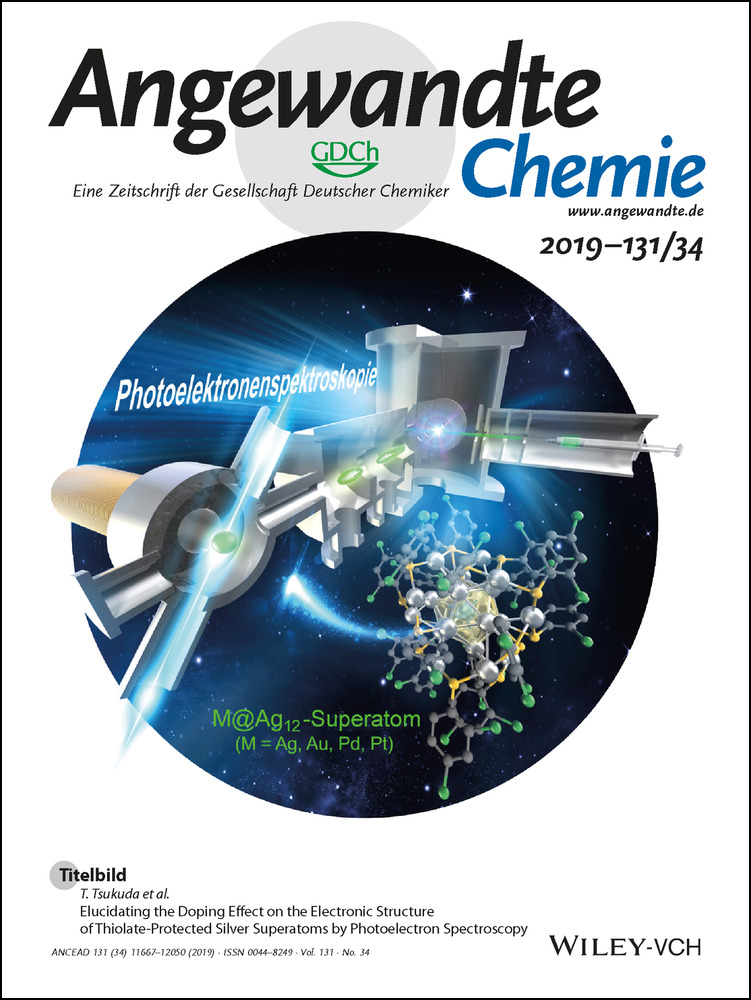Metal–Organic Framework-Activated Carbon Composite Materials for the Removal of Ammonia from Contaminated Airstreams
Corresponding Author
Lauren N. McHugh
School of Chemistry, University of St Andrews, St Andrews, KY16 9ST UK
Search for more papers by this authorAngela Terracina
Dipartimento di Fisica e Chimica, Università delgi Studi di Palermo, Palermo, 3690123 Italy
Search for more papers by this authorDr. Paul S. Wheatley
School of Chemistry, University of St Andrews, St Andrews, KY16 9ST UK
Search for more papers by this authorDr. Gianpiero Buscarino
Dipartimento di Fisica e Chimica, Università delgi Studi di Palermo, Palermo, 3690123 Italy
Search for more papers by this authorMartin W. Smith
CBR Division, Dstl Porton Down, Salisbury, SP4 0JQ UK
Search for more papers by this authorProf. Russell E. Morris
School of Chemistry, University of St Andrews, St Andrews, KY16 9ST UK
Search for more papers by this authorCorresponding Author
Lauren N. McHugh
School of Chemistry, University of St Andrews, St Andrews, KY16 9ST UK
Search for more papers by this authorAngela Terracina
Dipartimento di Fisica e Chimica, Università delgi Studi di Palermo, Palermo, 3690123 Italy
Search for more papers by this authorDr. Paul S. Wheatley
School of Chemistry, University of St Andrews, St Andrews, KY16 9ST UK
Search for more papers by this authorDr. Gianpiero Buscarino
Dipartimento di Fisica e Chimica, Università delgi Studi di Palermo, Palermo, 3690123 Italy
Search for more papers by this authorMartin W. Smith
CBR Division, Dstl Porton Down, Salisbury, SP4 0JQ UK
Search for more papers by this authorProf. Russell E. Morris
School of Chemistry, University of St Andrews, St Andrews, KY16 9ST UK
Search for more papers by this authorAbstract
Metal–organic frameworks (MOFs) are a class of porous materials that show promise in the removal of toxic industrial chemicals (TICs) from contaminated airstreams, though their development for this application has so far been hindered by issues of water stability and the wide availability and low cost of traditionally used activated carbons. Here a series of three MOF-activated carbon composite materials with different MOF to carbon ratios are prepared by growing STAM-17-OEt crystals inside the commercially available BPL activated carbon. The composite materials display excellent water stability and increased uptake of ammonia gas when compared to unimpregnated carbon. Such properties make these composites very promising in the fields of air purification and personal protective equipment.
Supporting Information
As a service to our authors and readers, this journal provides supporting information supplied by the authors. Such materials are peer reviewed and may be re-organized for online delivery, but are not copy-edited or typeset. Technical support issues arising from supporting information (other than missing files) should be addressed to the authors.
| Filename | Description |
|---|---|
| ange201905779-sup-0001-misc_information.pdf444.8 KB | Supplementary |
Please note: The publisher is not responsible for the content or functionality of any supporting information supplied by the authors. Any queries (other than missing content) should be directed to the corresponding author for the article.
References
- 1
- 1aA. C. McKinlay, R. E. Morris, P. Horcajada, G. Férey, R. Gref, P. Couvreuer, C. Serre, Angew. Chem. Int. Ed. 2010, 49, 6260; Angew. Chem. 2010, 122, 6400;
- 1bI. A. Lázaro, R. S. Forgan, Coord. Chem. Rev. 2019, 380, 230.
- 2
- 2aR.-B. Lin, S. Xiang, H. Xing, W. Zhou, B. Chen, Coord. Chem. Rev. 2019, 378, 87;
- 2bK. Sumida, D. L. Rogow, J. A. Mason, T. M. McDonald, E. D. Bloch, Z. R. Herm, T.-H. Bae, J. R. Long, Chem. Rev. 2012, 112, 724.
- 3
- 3aG. W. Peterson, G. W. Wagner, A. Balboa, J. Mahle, T. Sewell, C. J. Karwacki, J. Phys. Chem. C 2009, 113, 13906;
- 3bE. Barea, C. Montoro, J. A. R. Navarro, Chem. Soc. Rev. 2014, 43, 5419.
- 4
- 4aL. Hamon, C. Serre, T. Devic, T. Loiseau, F. Millange, G. Férey, G. De Weireld, J. Am. Chem. Soc. 2009, 131, 8775;
- 4bJ. A. Zárate, E. Sánchez-González, T. Jurado-Vázquez, A. Gutiérrez-Alejandre, E. González-Zamora, I. Castillo, G. Maurin, I. A. Ibarra, Chem. Commun. 2019, 55, 3049.
- 5M. Jacoby, Chem. Eng. News 2014, 92, 34–38.
- 6
- 6aN. C. Burtch, H. Jasuja, K. S. Walton, Chem. Rev. 2014, 114, 10575;
- 6bM. Todaro, G. Buscarino, L. Sciortino, A. Alessi, F. Messina, M. Taddei, M. Ranocchiari, M. Cannas, F. M. Gelardi, J. Phys. Chem. C 2016, 120, 12879.
- 7S. Hindocha, S. Poulston, Faraday Discuss. 2017, 201, 113.
- 8M. E. Casco, J. Fernández-Catalá, M. Martínez-Escandell, F. Rodríguez-Reinoso, E. V. Ramos-Fernández, J. Silvestre-Albero, Chem. Commun. 2015, 51, 14191.
- 9O. Fleker, A. Borenstein, R. Lavi, L. Benisvy, S. Ruthstein, D. Aurbach, Langmuir 2016, 32, 4935.
- 10
- 10aR. Osovsky, D. Kaplan, I. Nir, H. Rotter, S. Elisha, I. Columbus, Environ. Sci. Technol. 2014, 48, 10912;
- 10bD. Kaplan, L. Shmueli, I. Nir, D. Waysbort, I. Columbus, Clean: Soil, Air, Water 2007, 35, 172.
- 11L. N. McHugh, M. J. McPherson, L. J. McCormick, S. A. Morris, P. S. Wheatley, S. J. Teat, D. McKay, D. M. Dawson, C. E. F. Sansome, S. E. Ashbrook, C. A. Stone, M. W. Smith, R. E. Morris, Nat. Chem. 2018, 10, 1096.
- 12B. P. Russell, M. D. Levan, Carbon 1994, 32, 845.
- 13CEN European Normalization Committee, European Norm EN 14387, Respiratory Protective device—gas filters and combined filters—Requirements, testing, marking (BSI British standards, London 2004).
- 14F. D. Magalhães, R. L. Laurence, W. C. Conner, J. Phys. Chem. B 1998, 102, 2317.
- 15J. R. Álvarez, E. Sánchez-González, E. Pérez, E. Schneider-Revueltas, A. Martinez, A. Tejeda-Cruz, A. Islas-Jácome, E. González-Zamora, I. A. Ibarra, Dalton Trans. 2017, 46, 9192.
- 16M. Mazaj, T. Čendak, G. Buscarino, M. Todaro, N. Zabukovec Logar, J. Mater. Chem. A 2017, 5, 22305.
Citing Literature
This is the
German version
of Angewandte Chemie.
Note for articles published since 1962:
Do not cite this version alone.
Take me to the International Edition version with citable page numbers, DOI, and citation export.
We apologize for the inconvenience.




